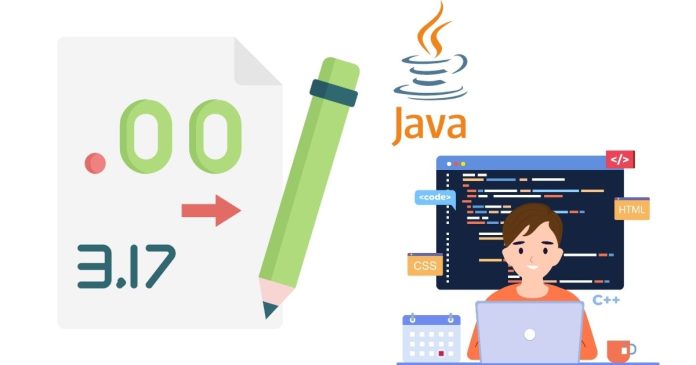In Java, formatting numbers to control their appearance is a common task. Whether you’re working with financial data, scientific figures, or simply need to format a number to a specific precision, Java provides a class called DecimalFormat to handle these scenarios.
The DecimalFormat class, which is part of the java.text package, allows you to format decimal numbers, controlling the number of decimal places, grouping, padding, and much more. This article explores how to use DecimalFormat to format numbers in various ways.
1. Overview of DecimalFormat
DecimalFormat is a subclass of NumberFormat that provides a way to format decimal numbers in a user-defined way. It allows you to specify the pattern for how numbers should be formatted. For example, you can set the number of decimal places, whether or not to include a grouping separator (like commas), and how to handle rounding.
Syntax for Creating DecimalFormat Object:
Where pattern is a string that defines the desired format for the number.
2. Basic Number Formatting with DecimalFormat
Example 1: Formatting Numbers with Specific Decimal Places
Let’s start by formatting a number to a specific number of decimal places.
Code Example:
Explanation:
- The pattern
"#.##"means “at most two digits after the decimal point.” - If the number has more than two decimal places, it will be rounded to two places.
- If there are fewer than two decimal places, the number is displayed without extra zeroes.
Output:
In this case, 1234.56789 is rounded to 1234.57.
3. Formatting with Comma Separators
You can use DecimalFormat to include commas for grouping digits. This is particularly useful for formatting large numbers to improve readability.
Example 2: Adding Commas as Thousand Separators
Code Example:
Explanation:
- The pattern
"#,###.##"ensures that commas are placed every three digits to the left of the decimal point.
Output:
In this example, the number 1234567.89 is formatted with commas separating the thousands.
4. Handling Percentages with DecimalFormat
The DecimalFormat class can also be used to format numbers as percentages by multiplying the number by 100 and appending a percentage symbol.
Example 3: Formatting as Percentages
Code Example:
Explanation:
- The pattern
"#.00%"multiplies the number by 100, converts it to a percentage, and then displays two decimal places. - The
%.part of the pattern is what appends the percentage sign (%).
Output:
Here, the value 0.1234 is converted to 12.34%.
5. Rounding Numbers with DecimalFormat
You can control the rounding behavior when formatting numbers using DecimalFormat. The default rounding mode is ROUND_HALF_EVEN, but this can be changed if needed.
Example 4: Rounding Numbers
Code Example:
Explanation:
- The pattern
"#.##"specifies that we want up to two decimal places. - We set the rounding mode to
ROUND_HALF_UP, meaning values 0.005 and above will be rounded up.
Output:
In this example, the number 123.4567 is rounded to 123.46.
6. Using Custom Symbols for Currency and Other Formats
DecimalFormat allows you to customize symbols for different locales, such as currency symbols, decimal separators, and group separators.
Example 5: Formatting with Currency Symbol
Code Example:
Explanation:
- The pattern
"$###,###.00"formats the number as currency with commas and two decimal places.
Output:
7. Summary of DecimalFormat Patterns
| Pattern | Description | Example |
|---|---|---|
"#" |
Digit placeholder (optional) | 123 |
"#.##" |
Up to two decimal places, no leading zeros | 123.45 |
"#,###" |
Thousands separator with no decimal places | 1,234 |
"#.00%" |
Percentage with two decimal places | 12.34% |
"$###,###.00" |
Currency format with commas and two decimals | $1,234.56 |
The DecimalFormat class in Java is a powerful and flexible tool for formatting numbers. It allows you to control decimal precision, group digits with commas, display percentages, handle rounding, and even format currency values. Understanding how to use DecimalFormat effectively can help you create more readable and user-friendly applications, especially when working with numerical data in financial, scientific, or general-purpose scenarios.


